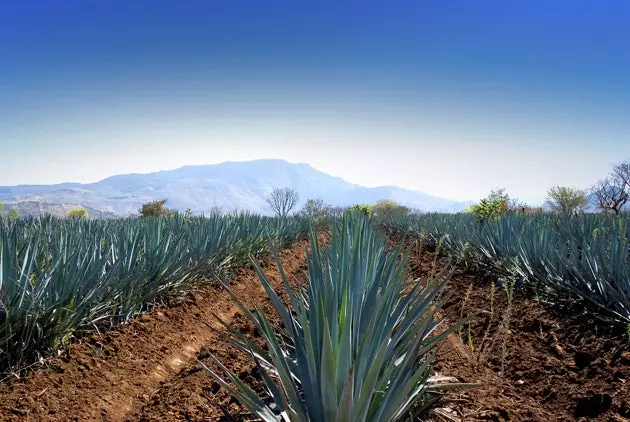
Agave fields in Tequila
But this chaos flows in a mysterious balance between stone roads and agave fields, between its big cities and remote communities where you can breathe a atavistic essence . Everything makes sense under the care of the Sierra Madre Occidental and the South, everything fits between the art of charrería, tequila and mariachi . We embark on a rural adventure, a journey of pure Jalisco tradition, which discovers us an extrasensory Jalisco, magical.
Reach Vallarta Port is to make a song to the longed for infinite summer. Leaving the airport, so central, so close to the Pacific that it seems that the pilot will land in the middle of the ocean, the humidity makes an appearance, as does the drop in voltage: welcome to the tropics . Our base camp, the exclusive and silent Hotel Casa Velas; Our goal is to explore what surrounds this beach destination, what lies beyond the sandbanks. Leaving the sea behind us, we look up. And there they are, the imposing mountains, of an intense green, reminding us that they are the ones who rule (they, the same ones that prevented the passage of Hurricane Odile, so implacable with Baja California days before our arrival ) . What are you hiding, Sierra Madre?
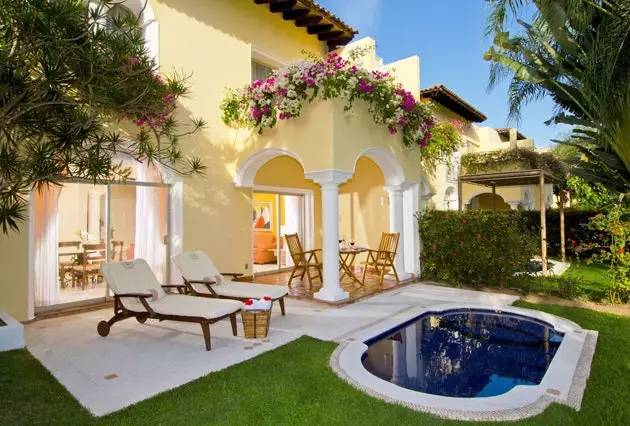
The backwater of Puerto Vallarta
We follow their paths slow, bumpy roads with unpaved sections : one can only ignore the hands of the clock and the 72 kilometers that remain to the goal, San Sebastian of the West : these roads make us forget the European parameters. However, what we see through the window places us inevitably in another place, as remote as it is exotic: "there are tamales and atole", "gorditas de nata", "groceries, fruits and vegetables"... and a endless strollers who walk the sidewalks aimlessly. Or so it seems.
Suddenly, an obligatory stop: we find ourselves before a ravine only saved by the Progress Bridge (part of a road plan started ten years ago to unite Puerto Vallarta, the communities of the Sierra Madre Occidental and the capital, Guadalajara, in a single road), a vertiginous vision of the entrails of the mountain. On the other side of the bridge, tradition. San Sebastián del Oeste is an old mining town which was dedicated until the end of the 19th century to the extraction of gold and silver. Today, with its mines closed but its charm intact, it is considered one of the five Magical Towns of Jalisco , designated by the Ministry of Tourism (an action to put more pins on the map of Mexican attractions, the rural ones, and promote the development of these communities) .
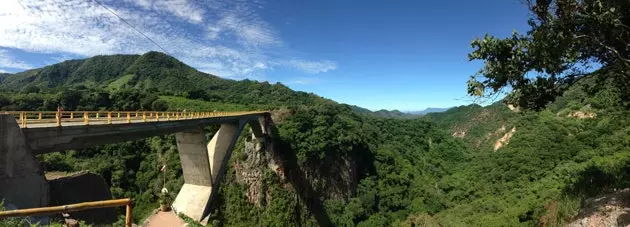
Bridge of Progress, a view over the Sierra Madre
The intense chlorophyll green of the Sierra Madre Occidental It accompanies us every step we take through the cobbled streets of the town. The adobe houses and tile roofs show their interior without shame: here there are no keys or windows to close against the visit of outsiders. Life goes on calm , only broken by the passage of the horses, some motor (those rancheras that invade Jalisco) and distant musical notes "she wears a dress of kisses that I embroidered myself..." that intensify as we approach the Mexican Revolution Square . Time for a michelada in The handrail, a joint from the square from whose terrace we observe the epicenter of the town and notice its leisurely pace. It is difficult to imagine that in this same silent place, of about 600 inhabitants, so remote and embraced by the mountains, 20,000 people dedicated to mining the ** Hacienda Jalisco ** (converted into a museum-hotel where electricity is changed by the light of a lamp).
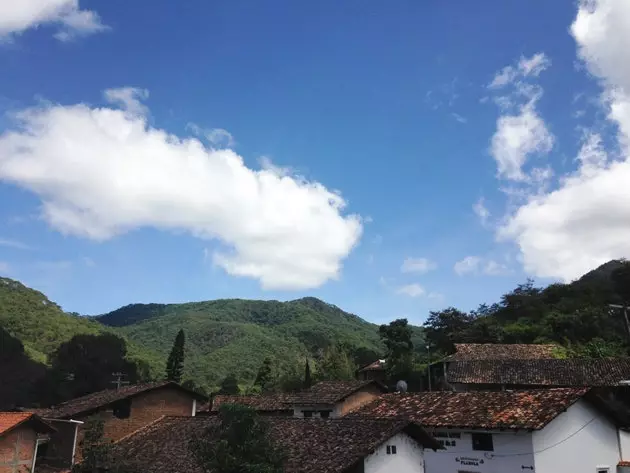
San Sebastian of the West
THE FLAVOR OF THE WESTERN SIERRA MADRE
Currently, their neighbors live from agriculture and of livestock. And of the coffee. We enter the Fifth Mary , living history of the town, a family coffee plantation active since 1890 and in which today its fifth generation works, led by Raphael Alvarado. The smell is strong, it is moist, it is roasted. We are 1,600 meters above sea level, a perfect location for high altitude coffee cultivation . And without additives or artificial irrigation. What the land gives, the Alvarados work. Nothing more . The coffee we tasted is 100% natural. Gloria coffee that invades the palate leaving that aftertaste of earth, humidity, a centuries-old and artisan work. Is it the height that makes this tasting an extrasensory experience? Something happens in San Sebastián del Oeste...
We leave the Quinta with a toasted tongue and the perfect dressing for a high-altitude coffee as robust as this one: pinole, a mixture of corn, cinnamon and sugar, and the quintessential dessert, guayabate, a kind of Mexican candy made of guava with a lot of sugar, only suitable for those with a sweet tooth. It's time to stop and eat in a place as typical as its name, The lupita . And the festival of flavors continues with an essential appetizer on the tables of Jalisco: tortilla chips (crispy fried tortilla) with molcajete sauce (a pre-Hispanic mortar made of volcanic stone that provides a more delicious flavor to the red or green sauce that is prepared here), quesadillas and tortillas with machaca (dried beef with tomato, chili, beans and rice) .
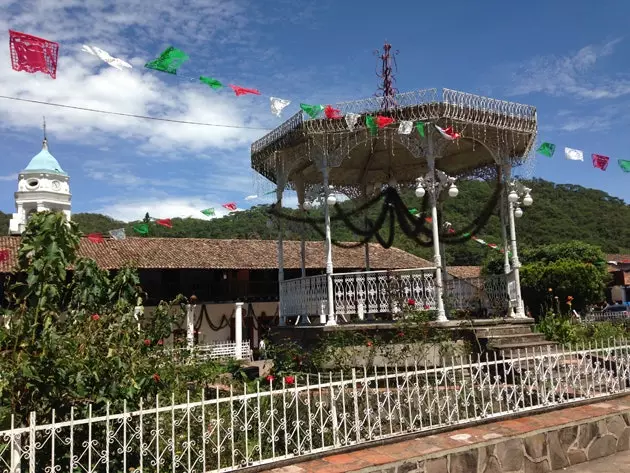
Plaza of the Mexican Revolution in San Sebastian del Oeste
Leaving La Lupita with that richness of flavors still in your stomach is addictive. We want more. To appease the cravings, nothing like a good local digestif in the Hacienda Don Lalin (and no, not everything in Jalisco is tequila). San Sebastián del Oeste is a producer of raicilla, a liqueur made from green agave (not blue, like the spirit par excellence), whose starch is transformed into sugar in a process over low heat (and at 600ºC) that lasts about four days. Afterwards, touch the fermentation of a week in a barrel with spring water. Subsequently, a double distilled (everything to get out of hiding alcohol levels). And as a final step: the toast and the shot . It is strong, very strong. Root flavor is invasive, fast, relentless : soon the taste is made with the whole mouth and the drink devastates the esophagus. The final taste, on the other hand, is unbeatable, with a sweet residue. Like a pat on the back for a job well done (or a drink well given).
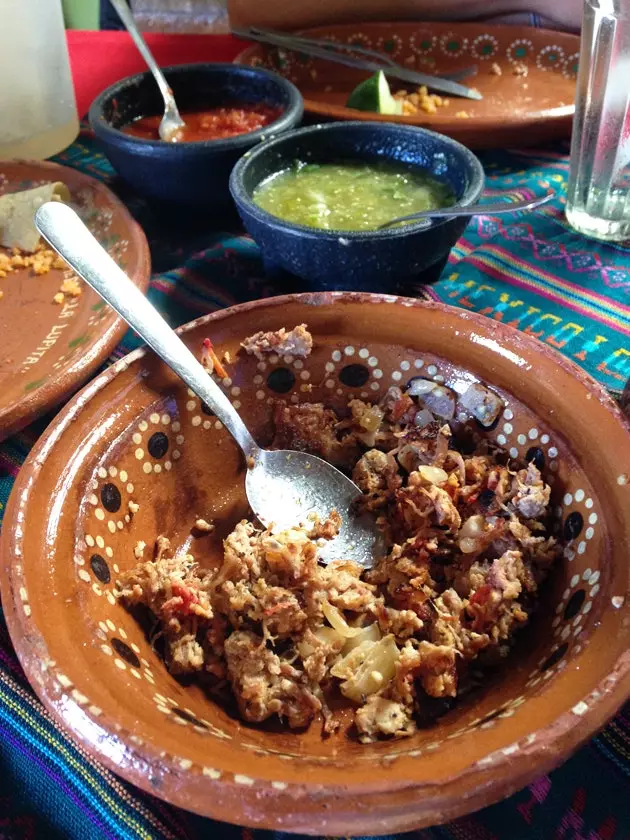
Tortilla chips and meat with machaca from La Lupita
THE ROAD TO THE LAND OF COLORS
From Puerto Vallarta to Guadalajara there is little more than half an hour by plane, a saving half hour (goodbye to the holes in the asphalt) to get fully into the heart of the State of Jalisco and leave the maritime face of the Sierra Madre Occidental. The land of Guadalajara, the land of Guadalajara (term from the nahuatl indigenous language and which refers to three cocoa units that functioned as currency) is home to the charrería, the taming of horses. What began as a trade in the great Mexican colonial haciendas of the 17th century ended up becoming a sport two centuries later and, more than a competition, an art.
In this search for the essence of Jalisco, one of its great symbols could not be missing, the charro riding an impressive quarter mile. El Rancho Los Tres Potrillos, in Guadalajara, is a place dedicated to preserving traditions, a charro school where the lessons learned over 300 years ago **continue to be practiced on the canvas (the ring)**. This ranch is owned by the famous King of the ranchera song, Vicente Fernández Gómez, who opens the doors of part of his land for free for those who want to learn about the art of charrería.
Who gives the chest, however, is the Bachelor Fernando Jimenez , an expert commentator on the horsemanship competitions who speaks with indescribable pride: "the horsemanship is not just a sport, it is music, it is art, it is tradition, it is history...". It's everything? Those words begin to make sense when, in one of the canvases of the ranch, several charros demonstrate the different tasks with their horses, the control of the animal with just a movement of the hip, how the charro ties the rope around the hindquarters of a wild mare, how the smell of burning wood feels when the rope virulently hugs the neck of the charro's saddle with all the strength of the mare... "The expensive aroma" , They call it. A centuries-old smell that mixes with that of the stables and the leather of the saddles. Everything is sensations rocked by the relentless sound of horseshoes against the sand. Imagine this scene in the middle of a field in the foothills of the Sierra Madre Occidental, suddenly, it becomes close, possible, completely in tune with the sensations experienced so far in Jalisco.
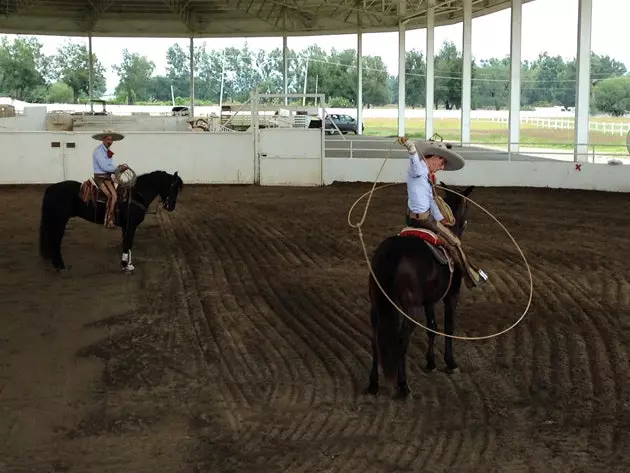
Three Foals Ranch
We follow the road by car, unfortunately without horses, with the objective set in another Magical Town, Tapalpa (about 130 km from Guadalajara). We do not take the easy road: the straight line is for cowards. We prefer to let ourselves go southeast, entering the municipality of Chapala, full of small, quaint communities with stories to tell, that claim us with their colors, their street food stalls at the foot of the asphalt... and its lagoon, of the same name, that claims us with the reflection of the sun in its waters on a day that threatens a storm.
It is not necessary to get warm, the humidity takes care of it, but any excuse is good to taste an authentic tortilla soup (more, if it is with views of this lagoon, between the flight of buzzards and herons ) . A good broth with avocado, corn tortilla strips, pasilla chili (one of the mildest for gringos unaccustomed to spicy) and melted cheese cooked in the **stoves of the Hotel Real de Chapala** is enough to get you back on the road and circle the lagoon. Until, again, like children, something catches us: they are warm colors , walls full of murals as far as the eye can see, low houses, winding cobblestone streets and dozens of art galleries.
We are in Ajijic, a commune of artists where you can stroll along the boardwalk, from club to club, where you can get lost among the textures of the Cielito Lindo Loom Factory, among the murals by local artist Jesús López Vega, the gourmet chocolates of the Quattro Gallery or the pictures of the Di Paola Gallery ... the history of Mexico is written with art and color in its streets, as in the mural of the eagle, the snake and the nopal, symbols of the coat of arms of Mexico that are not hidden in the chipped walls of Ajijic.
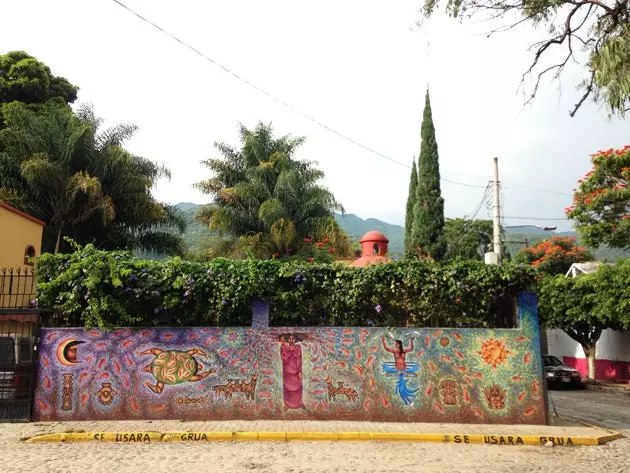
The mural streets of Ajijic
THE STRENGTH OF THE EARTH
With such a chromatic high, it's hard to say goodbye to this place, so small, so idyllic, so inspiring. But, luckily, we abandon ourselves to a worthy relay located west of Chapala: Tapalpa, a municipality of Otomi origin born in the 17th century . Not in vain, its name means "land of colors". Here the ground we walk on is transformed from reddish to brown tones, from orange to yellow... it is a great color palette on which a community of enormous telluric energy is based. We can't help it, we have to know where his magic comes from.
Thus we arrive at Valley of Enigmas , an esplanade on which large rounded rocks rest (the so-called pebbles ) . Walking among them makes us tiny, insignificant compared to the works of nature as if it were a painting by Friedrich. To date, their origin is not known with certainty, although it is believed that they are part of a meteorite that fell two million years ago, as he tells us. Jesús Ruiz Morales, Director of Culture and Tourism of Tapalpa . And the mystery: nothing grows in the surroundings of the stones since there is memory of this place. Every attempt at cultivation goes unnoticed. It is a barren land, with an enormous presence of quartz and where, to this day, ancestral energy ceremonies are held at each equinox.
But the experience is not complete until you walk through this bare field on horseback towards the valley of the lake, hidden behind the Piedrotas, among the cattle that graze peacefully and the charro that watches from his horse. Purito Jalisco . Imbued with energy, we reach the center of town. We are greeted by two-story white houses with rust-red trim, huddled next to each other on cobbled streets. Entering this town at night is impressive. The lights of the houses reveal interior patios, the occasional open restaurant... funeral homes displaying their coffins in shop windows in the moonlight. The holy dead always so present in this country.
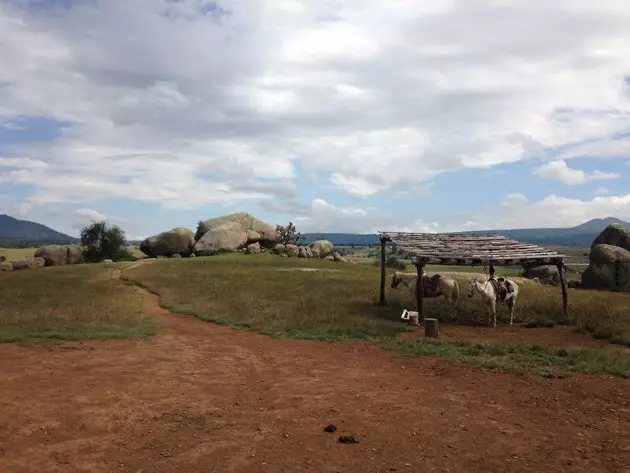
Las Piedrotas, telluric force and mystery in Tapalpa
We cross Tapalpa to reach El Remanso . Never has a name been so suitable for a place . This charming mountain hotel in sixteen rooms It is owned by Carlos and Gaby, architect and chef, where there is only silence and nature. Fireplaces, hammocks, large windows with views of the lake and honest architecture that "strengthens the natural elements and that does not bother the true architect, who is God," remarks Carlos. Wood, adobe, red brick, iron, mountain bike rides, water activities in the lake, baths in the pool, gym, sauna... some clueless little frog in the room, perhaps? and a gastronomy of ten, in the hands of Gaby and his family recipes that go back three generations (and collects the book Three generations: cooking with love ), make Remanso the place where we would all like to disappear for a while.
Although the room catches, the energetic Tapalpa awaits. To start the day you have to indulge in the local vice: the chard tamale prepared in the Casona del Manzano, a hearty plate of chard layers with corn paste cooked in its own leaf. Now we can address the center, where they are celebrating the Virgin of Mercy (yes, the same as in Catalonia) and the revelry is noticeable in its streets, in the lighting and also in the taste. If the tamale was not enough, it's time to try some of the dishes served in the streets of the Merced neighborhood, the gorditas de nata or a good taco al pastor.
Strolling through this place between fireworks, processions to the rhythm of drums and rattles in full religious fervor is sweet madness. We walk through Tapalpa and we come across different batteries, the four sources that supplied water to the neighbors, and that tell the history of the municipality and its indigenous Otomí mythology. It is the case of the Pile of the Snakes , dedicated to those four 'comadres' whose viperine and foul-mouthed tongues led them to become the four stone serpents of the fountain, under the spell cast by an otomi magician.
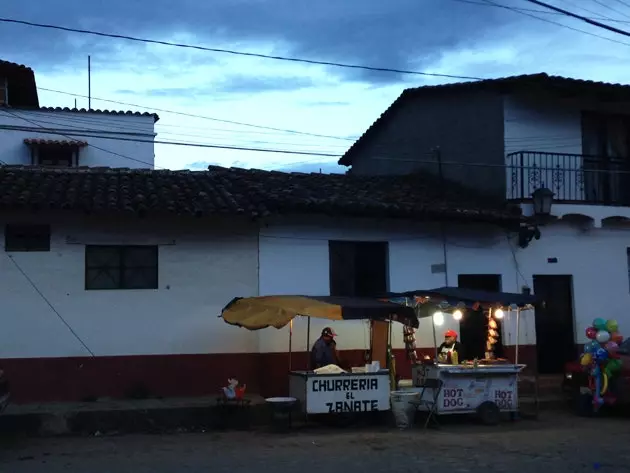
Tapalpa or #Tapalpeando
But the street fables , the energy of the land and the religious fervor are insufficient to define all of Tapalpa. The nature that surrounds it is not only telluric force, it is a source of life and healing. To find out more, we must go to Atacco, an Otomi settlement where Ijiyoteotl, namely, "the source of life" , a living pharmacy located in what was the first hospital for Indians in Latin America. Today, it is a place cared for by fourteen women who put the knowledge of their ancestors about plants at the service of the community, creating syrups, creams, shampoos... all born from the land and all in the hands of these healers who They also perform "clean" aura.
THE JALISCIENSE TOAST
In the midst of this process of comprehensive purification of body and soul, we say goodbye to Tapalpa to set course for our ultimate goal: Tequila . Words are unnecessary. To get there, we once again skip the simple path: we want to immerse ourselves fully in the arteries of Jalisco. To do this, we return to the arms of Guadalajara and get on the train of pleasures: the José Cuervo Express . We are not exaggerating when we speak of hedonism: a breakfast of fruit, cereal and yogurt awaits us as the first bite of the morning. The landscape we see is still urban, houses, shopping centers and tall buildings follow one another as we leave the city. It is at the moment of going to lunch when our views change. More than one of the magical towns of Jalisco, Tequila is an “agavic” town . It is incredible how the landscape changes as the train advances, how the browns transform into a pointed bluish green, in infinite successions of agaves aligned on endless undulating esplanades... And all this while we taste a drowned cake, an essential dish in Jalisco made with a thicker bread, stuffed with carnitas and dipped in various sauces.
We arrive at the final destination to set course for the great fields of Buenos Aires and All Saints , homes par excellence of this fleshy cactus, the blue agave. The sun is intense and the jimadores, the harvesters, show off their shiny skin reddened by the effort while handling the coa and the machete, the tools for cutting and pruning the agave, bathed in the incisive sunlight. These two jimadores who explain their work to us, Toño and José Luis, each unearth 400 to 500 agave pineapples a day that are transported to the José Cuervo La Rojeña factory for processing and distillation. But the agave is not only used for the pineapple for tequila. **The juice of the penca (the leaf) ** is cooked over low heat and mixed with Vaseline and rose water to create a cream that relieves burns, bites... a perfect natural healing agent. Honey is also produced from this same plant (suitable for diabetics because it does not contain sugar), agave paper... and beer, like Vida Latina , the new agave invention recently arrived on Mexican tables.
We return to tequila in Tequila, in the José Cuervo La Rojeña factory with 256 years of experience (they say, the oldest distillery in America, after eleven generations of Ravens). This is part of what is already known as Mundo Cuervo foundation and visitor center to unravel the world of tequila and the municipality. This month, February 2015, he will increase his influence with the opening of a hotel in the town.
From Jalisco one has to go singing and tasting. A sip of white tequila, another reposado and, to finish, an añejo. Which one wins the battle? Which is more refined? The answer is not unique: it is in the experience. Like everything in Jalisco.
_ You may also be interested..._* - Guide to understand and love Mexican wrestling
- Things that you will only understand if you are from Mexico City
- Pulque: instruction manual - Puebla, the revenge of Mexico without sun or beach
- Mexico City Guide
- Mezcal is the new tequila
- Chilanga night: spending an infinite day in Mexico D.F.
- Mexico: cacti, myths and rhythms
- Why mezcal is the drink of the summer
- All the articles of María F. Carballo
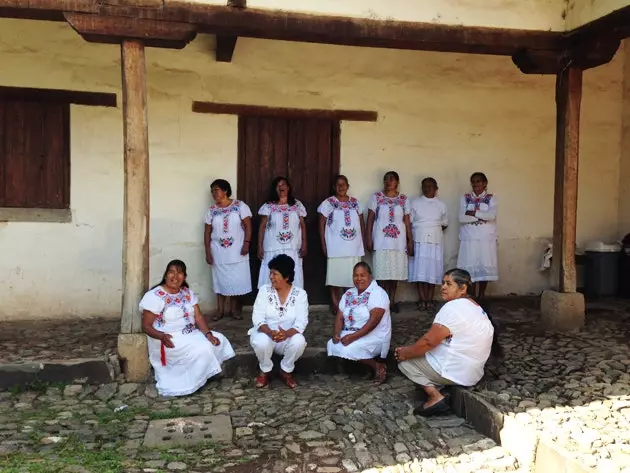
The Ijiyoteotl experts
